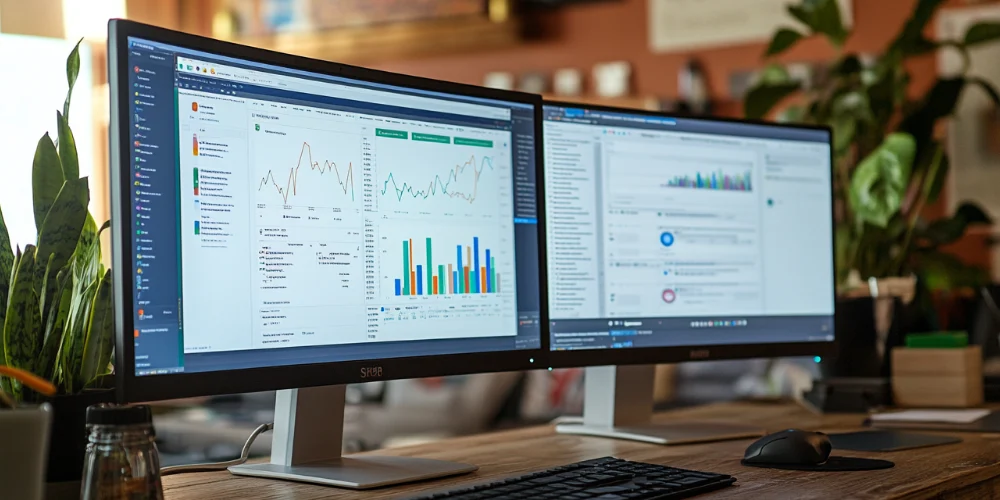Understanding Why Your Optimised Content May Not Rank in 2024
Many website owners ask, “Why doesn’t my optimised content rank in 2024?” despite careful SEO planning. This challenge can stem from various factors, such as technical SEO issues, page speed or indexing problems, or even a mismatch with search intent, where the content does not meet the exact needs of the target audience. By understanding these nuances and addressing technical and content-specific issues, site owners can enhance their chances of ranking higher in a competitive search landscape.
Achieving high rankings in search engine results pages (SERPs) requires more than optimising keywords and crafting compelling content. Despite diligent efforts, some content may struggle to rank. This article explores six common reasons why even the best-optimised pages might fall short—and what you can do to overcome each challenge.
1. Technical SEO Roadblocks
Technical SEO forms the foundation of a site’s search performance. However, various technical issues can quietly hinder your rankings.
Core Technical SEO Issues to Address
- Site Speed: Pages that take longer than 3 seconds to load can negatively impact user experience and bounce rates. (Google PageSpeed Insights)
- Mobile Optimisation: Google’s mobile-first indexing makes a responsive design essential. (Google Mobile-Friendly Test)
- Indexing Errors: Explore why unindexed pages can’t appear in search results and outline how to use tools like Google Search Console to diagnose indexing issues. (Google Search Console)
- Mobile Usability: Mobile-friendly designs are essential as mobile traffic dominates; poor mobile UX can lower rankings.
- Site Architecture: A clear and logical structure aids search engines in crawling, boosting visibility, and helping users find content.
- Indexation Errors: Pages blocked from indexing hinder SEO potential. Conduct regular audits to ensure high-priority pages remain indexed.
- SSL Certificates: Security signals are essential; HTTPS can improve rankings by building trust and enhancing user experience.
- Schema Markup: Structured data highlights essential info, allowing richer SERP results that improve visibility and click-through rates.
Solution: Conduct regular audits of technical health, prioritise page speed optimisation, and monitor Google Search Console for indexing status.
2. Incorrect Keyword Targeting and Mismatched Search Intent
Search intent refers to the reason behind a user’s search, which can be informational, navigational, commercial, or transactional. Failing to align your content with user intent can lead to low rankings and high bounce rates.
Critical Types of Search Intent
- Informational Intent: Users seek specific answers or general knowledge, like “how to optimise content for SEO.” To capture this traffic, provide valuable insights, guides, and direct answers.
- Navigational Intent: Users aim to reach a specific website or page. Use clear brand and navigation keywords to match user queries accurately.
- Transactional Intent: Users are ready to purchase or complete an action, like “buy SEO services.” Content here should be sales-driven with clear calls to action and easy navigation.
- Commercial Investigation Intent: These users compare products or services. Offer detailed comparisons, reviews, or case studies to attract and retain these visitors.
Solution: Begin every piece with a straightforward search intent in mind. Tailor content to address specific user needs and research intent via keyword analysis tools. (SEMrush, Ahrefs)
3. Lack of Internal Linking
Internal links guide users and search engines to key pages, improving site navigation and distributing link equity across your site. Pages without internal links can remain “orphans” within your site structure, limiting their SEO potential.
Best Practices for Internal Linking
- Content Hierarchy: Build a structured hierarchy where main pages link to relevant sub-pages.
- Anchor Text: Use descriptive, keyword-rich anchor text.
- Use Descriptive Anchor Text: Anchor text should be relevant and clear, describing the linked page’s content to improve SEO and user experience.
- Prioritise High-Value Pages: Link to pages you want to rank higher, like service pages or cornerstone content, directing link authority effectively.
- Maintain a Logical Link Hierarchy: Ensure linking follows a structured approach, helping users and crawlers navigate related content naturally.
- Avoid Over-linking: Manage link numbers to prevent diluting authority or overwhelming users.
Solution: Review older content and add internal links to connect relevant pieces of content. Consider linking from high-authority pages within your site.
4. Insufficient or Low-Quality Backlinks
External backlinks serve as endorsements from other websites, signalling your content’s authority. However, if your content has few or low-quality links, it might struggle to rank against competitors.
What Makes a Quality Backlink?
- Relevance: Links from sites within your niche carry more weight. They signal to search engines that your content aligns well with your industry. Links should come from websites within the same industry or niche.
- Domain Authority: High-authority sites like reputable news outlets or respected industry blogs offer stronger backlinks. Aim for links from domains with a solid track record. High-authority sites like news organisations or respected blogs carry more weight. (Moz Link Explorer)
- Diversity: A varied link profile with links from various domains enhances credibility. Having backlinks from various sources, such as blogs, news sites, directories, and social media, signals a natural and credible link profile to search engines. It reduces the risk of over-reliance on one domain or type of site, helping your backlink profile appear organic and trustworthy.
- Anchor Text: Well-chosen anchor text that includes keywords related to your page enhances relevance and ranking potential.
- Traffic Potential: Links from sites with high traffic levels can lead to both SEO boosts and referral traffic.
- Editorial Endorsement: Organic editorial links from authoritative sites suggest genuine trust, adding more value than self-created links or low-value directories.
Solution: Create link-worthy content and establish connections with industry influencers. Guest posting and outreach campaigns can also attract quality backlinks.
5. Duplicate Content Issues
Duplicate content refers to content that appears in more than one place on your website, confusing search engines and splitting ranking potential across URLs.
How Duplicate Content Occurs
- URL Parameters: Filters, tracking codes, or session IDs can create multiple URLs with the same content, leading to redundancy.
- HTTP vs HTTPS and www vs non-www Versions: Failing to standardise these can create duplicate copies in search results.
- Copied Content Across Pages: Repeated product descriptions or large content blocks across pages can result in duplication.
- Scraped or Syndicated Content: Other sites copying your content, even if authorised, can lead to duplicate indexing issues.
- Product Pages: E-commerce sites often have similar descriptions across multiple product pages.
- Blog Archives: Tag pages and category archives may cause duplicate content if not properly managed.
Solution: Use canonical tags to indicate the preferred URL version of duplicate pages. For e-commerce, write unique descriptions for key product pages and limit archive pages to prevent duplicate issues. (Google’s Guide on Canonical Tags)
6. Overly Competitive Keywords
Targeting competitive keywords without sufficient page authority can leave your content buried beneath established brands. Even well-optimised pages struggle to compete against sites with greater domain authority.
Finding Achievable Keywords
- Assess Keyword Difficulty: Use tools to check competition levels; target keywords with moderate difficulty for better ranking chances.
- Analyse Competitor Content: Research the keywords your competitors rank for and identify gaps where you could offer unique value.
- Focus on Long-Tail Keywords: Long-tail phrases capture niche audiences with clear intent, often driving more relevant traffic.
- Prioritise Search Volume: Balance high and medium-volume keywords to achieve visibility without overextending on high-competition terms.
- Semantic Keywords: Include synonyms and related terms to cover related search queries.
Solution: Conduct a competitive analysis on target keywords and balance broad search terms with achievable long-tail phrases. (WordStream’s Long-Tail Keyword Guide)
Overcoming Content Ranking Challenges
No single factor determines rankings; combining technical, creative, and strategic elements influences SEO success. By addressing each aspect discussed in this guide, you can improve content performance, boost engagement, and increase your chances of ranking higher on SERPs.

















